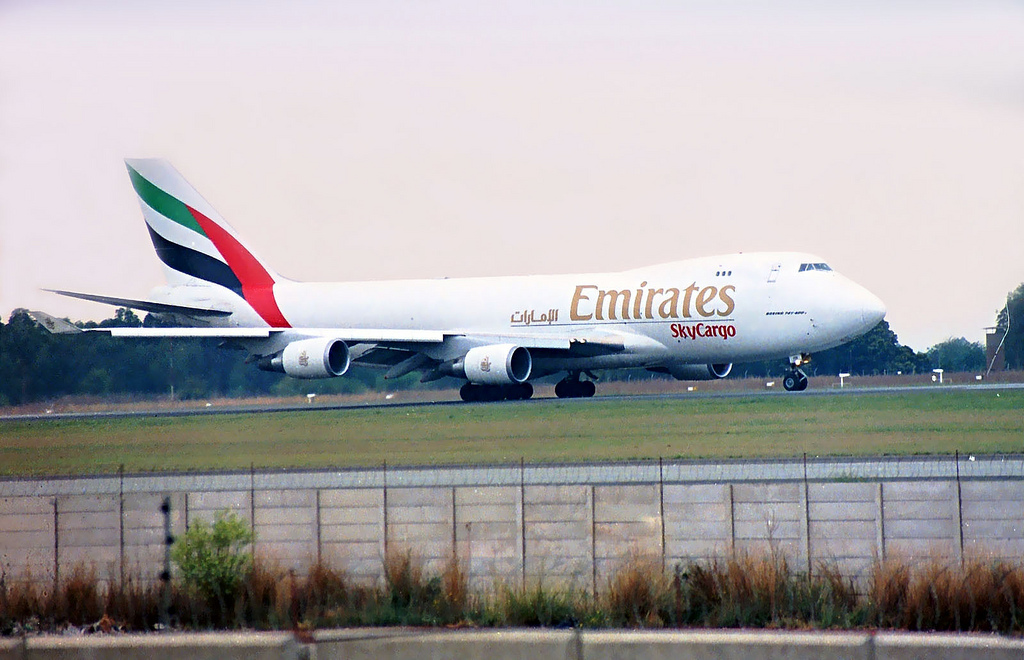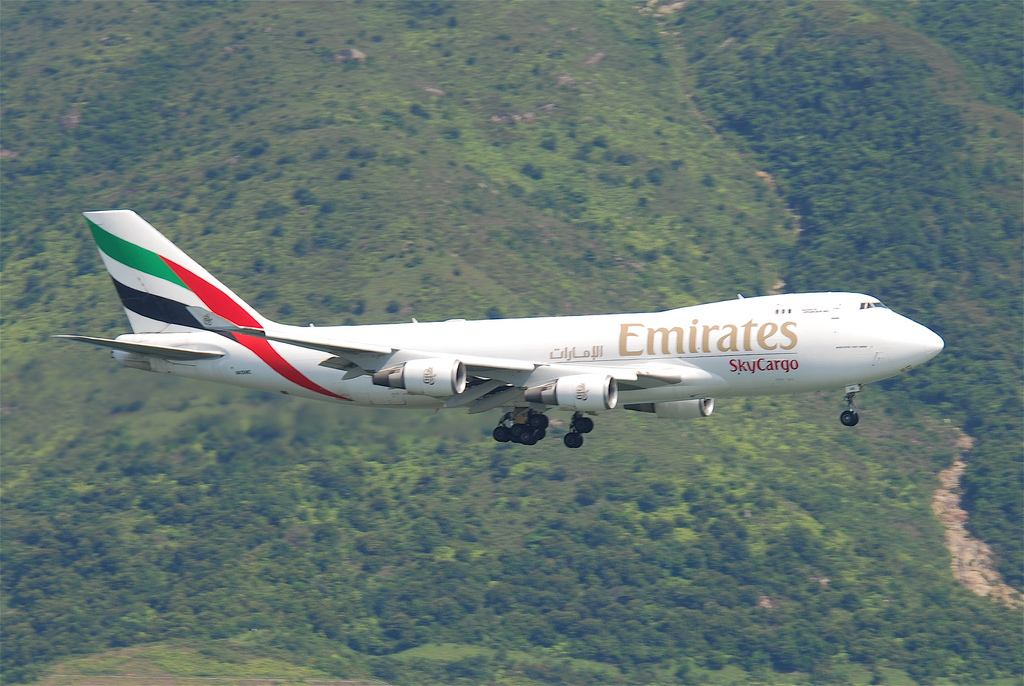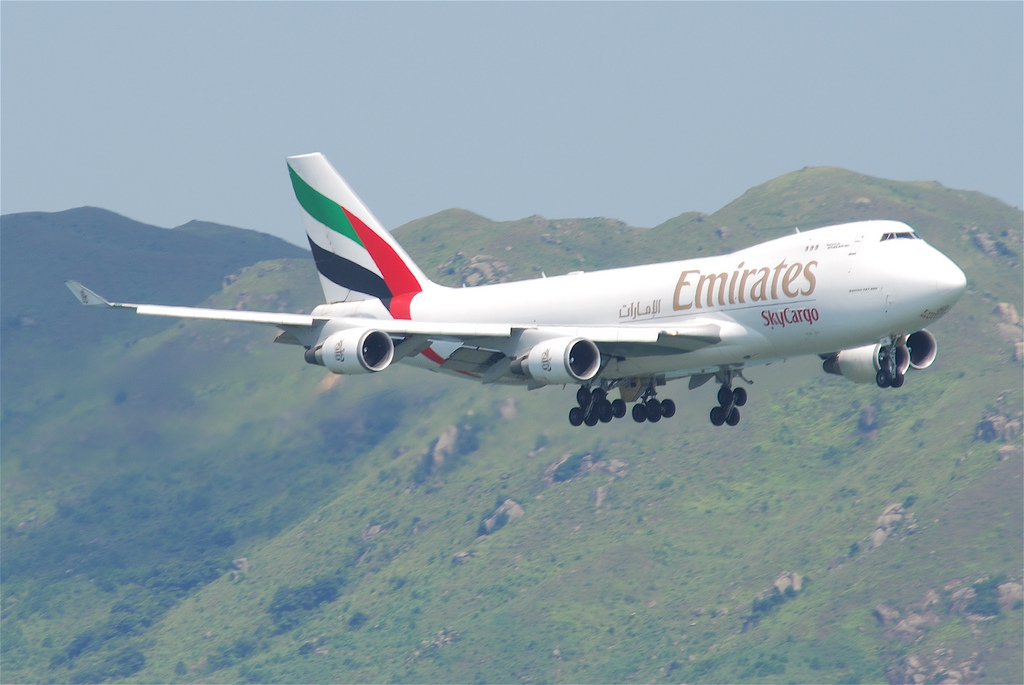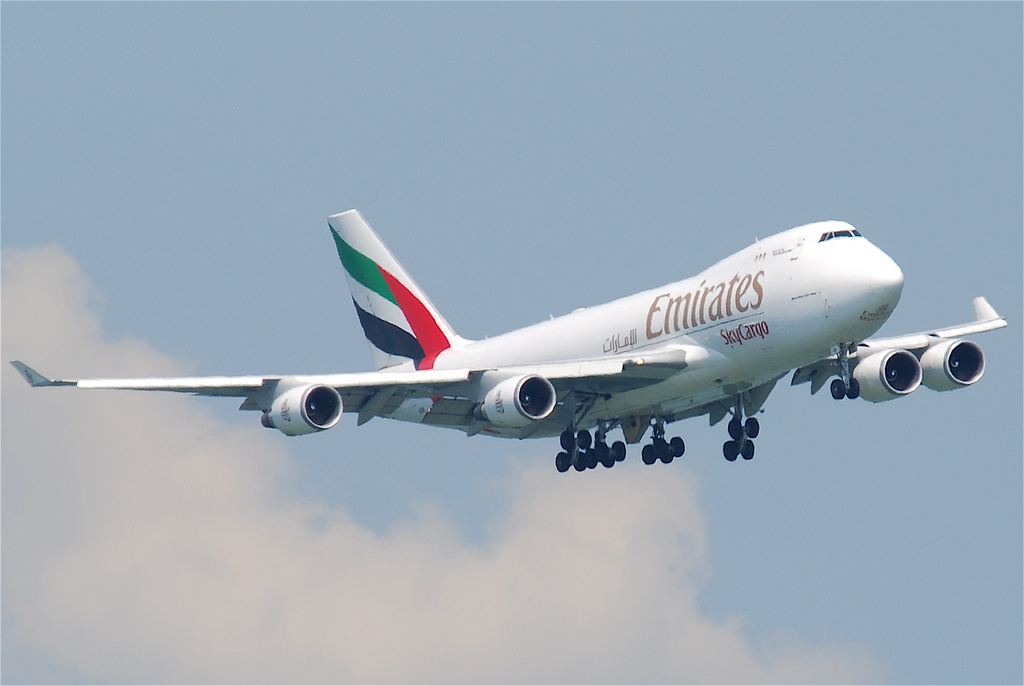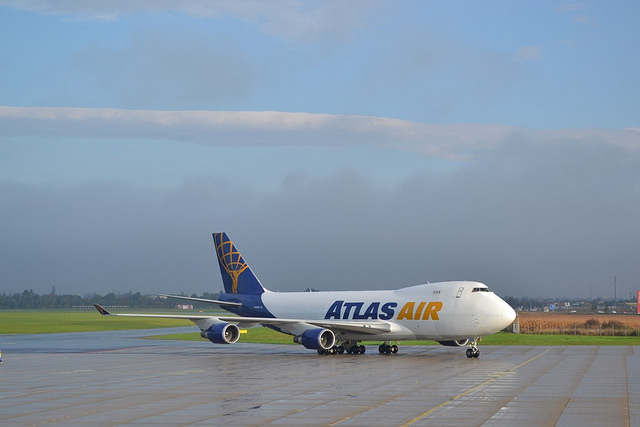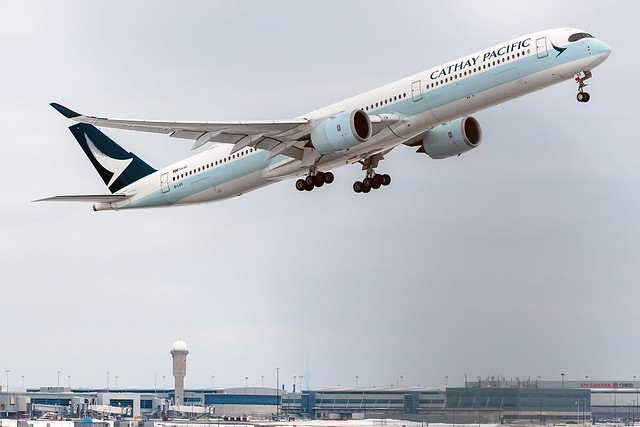Atlas B744 at Hong Kong on Aug 30th 2018, engine pod strikes during roll out
Last Update: November 19, 2020 / 15:49:48 GMT/Zulu time
Incident Facts
Date of incident
Aug 30, 2018
Classification
Report
Airline
Atlas Air
Flight number
5Y-8086
Departure
Dubai Al Maktoum, United Arab Emirates
Destination
Hong Kong, China
Aircraft Registration
N415MC
Aircraft Type
Boeing 747-400
ICAO Type Designator
B744
Airport ICAO Code
VHHH
On Nov 19th 2020 Hong Kong's Air Accident Investigation Authority (AAIA) released their final report concluding the probable causes of the serious incident were:
The damage to the underside of the inlet cowl, fan cowl and translating cowl of No.3 and No.4 engines was due to the combined effects of a sharp right yaw and significant right roll corresponding to the exaggerated inputs made by the PF.
Contributing Factors
- The PF made a sudden change of his crosswind landing technique from crab to decrab before the short final because he considered that the line check captain expected a de-crab landing.
- Prior to Top of Descent, the PF and the PM did not discuss crosswind landing technique or what would be expected during landing.
The AAIA summarized the sequence of events:
The Pilot Flying (PF), who occupied the left-hand seat (52, ATPL, 5,223 company hours total, 5,200 company hours on type), was undergoing a line check. Prior to Top of Descent, the Pilot Monitoring (PM) in the right-hand seat was the Line Check Captain (58, ATPL, 16,000 company hours total, 7,600 company hours on type). Behind them were two non-flying aircrew occupying the observers’ stations inside the flight deck.
At touchdown on Runway 25R at 1153 hrs local time, the aircraft firstly veered to the right of the runway centreline, then reversed abruptly to the left of the centreline, and sharply banked to the right of the centreline again. The right bank caused the right wing to drop so low that the bottom of No.3 and No.4 engine cowlings contacted the runway.
The aircraft eventually realigned with the runway centreline and taxied to the cargo parking apron.
There were no injuries, the aircraft received minor damage to the engine #3 and #4 nacelles.
The AAIA analysed the weather:
The analysis of recorded flight data indicated that there was no windshear or other EGPWS warning at the time of touchdown. The wind direction and the wind speed captured in the flight data was 200 degrees (50 degrees from the left of the runway centreline) and 17 knot. However, the wind direction was only recorded once every 4 seconds, which is inadequate for analysis of the prevailing wind conditions.
According to the wind data of the touchdown zone on Runway 25R, between 1154 hours and 1155 hours, the wind direction was between 154 degrees and 171 degrees. The wind speed was between 13 knots and 17 knots, gusting between 25 knots and 30 knots. It was believed that this was the wind condition the aircraft experienced at touchdown.
The AAIA analyed the FDR:
The analysis of the FDR data indicated that the aircraft systems functioned per design. No system anomalies were observed.
The take-off and the cruise portions of the flight had no issues and were conducted per the operator’s company procedures. There were no complications encountered during the flight.
The FDR data showed the controls positioned at neutral at the beginning of the flare, then a few seconds into flare the rudder pedal initially deflected upwind (left), then downwind (right), with control wheel deflected abruptly into the wind (left), then varied to the right and again left prior to touchdown. A 6-degree crab angle was present at touchdown.
At touchdown, right pedal and right roll inputs were made. The aircraft yawed right to 255 degrees (magnetic heading), 5 degrees to the right of the runway centreline, and made a right roll of up to 3.2°. This attitude lasted for about 2 seconds.
Then substantial left pedal and left roll inputs were made, seemingly checking the momentarily right bank. However, these inputs were exaggerated and the aircraft turned left a heading of 236 degrees (14 degrees to the left of the runway centreline) and a left roll of about 4.6 degrees. This moment lasted for about 5 seconds.
Two seconds before reaching the heading of 236 degrees, substantial right pedal and right roll inputs were made, again seemingly checking the significant left bank. The inputs took effect and the aircraft bank to the right. When the aircraft heading reached 245 degrees, it reached the maximum right roll of 5.6 degrees. It was believed that at this point the combined effects of the sharp right yaw and right roll caused a significant drop of the right wing. As a result, the underside of the inlet cowl, fan cowl and reverser translating cowl of No.3 and No.4 engines heavily abraded the runway and locally deformed.
After that, the attitude of the aircraft eventually returned to normal.
Based on the various weather information, it is considered that wind direction and speed was not a significant issue to the control of the aircraft during and after landing.
From the recorded data, it is clear that the aircraft responded correctly to the crew’s control inputs.
The aircraft veering and rolling was probably due to a series of incorrect rudder and aileron inputs made after the touchdown.
...
The aircraft was in a crab at touchdown and the left wing lifted because of the crosswind. Due to the landing gear mass distribution, there were compound effects of the runway friction induced moments around the gear and acting on the lateral control inputs. According to the analysis of the flight data, the pilot’s input on the controls was about 2 seconds behind the directional control of the aircraft.
Each input was for the previous lateral deviation and the pilot at one point over-corrected with full LH rudder deflection as the aircraft yawed left.
It is possible that the PF was unfamiliar with the techniques of de-crabbing an aircraft just before touchdown in crosswind landing.
Metars:
VHHH 300500Z 19018KT 160V230 9999 -SHRA FEW010 SCT023 29/25 Q1005 TEMPO 20020G30KT 3000 -TSRA SHRA FEW012CB SCT020=
VHHH 300430Z 19018KT 160V230 9999 FEW010 SCT023 29/24 Q1005 TEMPO 20020G30KT 3000 -TSRA SHRA FEW012CB SCT020=
VHHH 300400Z 19016G26KT 150V210 9999 4400N -SHRA FEW010 SCT023 29/25 Q1005 TEMPO 20020G30KT 3000 -TSRA SHRA FEW012CB SCT020=
VHHH 300330Z 18017G28KT 150V220 9999 FEW010 SCT023 29/25 Q1005 TEMPO 20020G30KT 3000 -TSRA SHRA FEW012CB SCT020=
VHHH 300300Z 19014G25KT 160V230 9999 -SHRA FEW010 SCT023 29/25 Q1005 TEMPO 3000 -TSRA SHRA FEW012CB SCT020=
VHHH 300230Z 19017G32KT 150V210 9999 FEW010 SCT020 30/24 Q1005 TEMPO 3000 -TSRA SHRA FEW012CB SCT020=
VHHH 300200Z 19014KT 140V220 9999 FEW010 SCT020 29/24 Q1005 TEMPO 3000 -TSRA SHRA FEW012CB SCT020=
VHHH 300130Z 19012KT 150V220 9999 FEW010 SCT025 29/24 Q1005 NOSIG=
VHHH 300100Z 18017KT 9999 -SHRA FEW010 SCT028 29/24 Q1005 NOSIG=
VHHH 300030Z 19011KT 9999 FEW010 SCT028 29/24 Q1004 TEMPO 3500 SHRA FEW010CB SCT020=
VHHH 300000Z 20016KT 9999 FEW010 SCT028 29/24 Q1004 TEMPO 3500 SHRA FEW010CB SCT020=
Aircraft Registration Data
Incident Facts
Date of incident
Aug 30, 2018
Classification
Report
Airline
Atlas Air
Flight number
5Y-8086
Departure
Dubai Al Maktoum, United Arab Emirates
Destination
Hong Kong, China
Aircraft Registration
N415MC
Aircraft Type
Boeing 747-400
ICAO Type Designator
B744
Airport ICAO Code
VHHH
This article is published under license from Avherald.com. © of text by Avherald.com.
Article source
You can read 2 more free articles without a subscription.
Subscribe now and continue reading without any limits!
Read unlimited articles and receive our daily update briefing. Gain better insights into what is happening in commercial aviation safety.
Send tip
Support AeroInside by sending a small tip amount.
Related articles
Atlas B744 over Atlantic on Apr 17th 2016, main deck cargo fire indication
An Atlas Air Boeing 747-400 freighter, registration N415MC performing freight flight 5Y-5421 from Miami,FL (USA) to Amsterdam (Netherlands), was…
Atlas B744 at Tokyo on Aug 12th 2024, hydraulic failure, tyre damage on landing
An Atlas Air Boeing 747-400 freighter, registration N404KZ performing flight 5Y-7106 from Tokyo Narita (Japan) to Los Angeles,CA (USA), was climbing…
Atlas B744 near Amsterdam on Jul 19th 2025, engine shut down in flight
An Atlas Air Boeing 747-400 freighter, registration N439GT performing flight 5Y-8153 from Almaty (Kazakhstan) to Amsterdam (Netherlands), was…
Atlas B744 at Quito on Jun 12th 2025, engine shut down in flight
An Atlas Air Boeing 747-400, registration N476MC performing flight 5Y-8208 from Quito (Ecuador) to Miami,FL (USA), was climbing out of Quito when the…
Atlas B748 at Miami on Jan 18th 2024, engine fire
An Atlas Air Boeing 747-8 Freighter, registration N859GT performing flight 5Y-95 from Miami,FL (USA) to San Juan (Puerto Rico) with 5 crew on board,…
Atlas B744 over Pacific on Jul 28th 2024, burning smell on board
An Atlas Air Boeing 747-400, registration N487MC performing flight 5Y-8193 from Seoul (South Korea) to Anchorage,AK (USA) with 4 crew, was enroute at…
Newest articles
Endeavor CRJ7 at Charlotte on Dec 22nd 2025, engine shut down in flight
An Endeavor Canadair CRJ-700 on behalf of Delta Airlines, registration N641CA performing flight DL-4827 from Charlotte,NC to Atlanta,GA (USA) with 68…
Cathay Pacific A35K at Hong Kong on Nov 26th 2025, tail strike during go around
A Cathay Pacific Airbus A350-1000, registration B-LXO performing flight CX-764 from Ho Chi Minh City (Vietnam) to Hong Kong (China), was landing on…
Subscribe today
Are you researching aviation incidents? Get access to AeroInside Insights, unlimited read access and receive the daily newsletter.
Pick your plan and subscribePartner

ELITE Simulation Solutions is a leading global provider of Flight Simulation Training Devices, IFR training software as well as flight controls and related services. Find out more.
SafetyScan Pro provides streamlined access to thousands of aviation accident reports. Tailored for your safety management efforts. Book your demo today
AeroInside Blog
Popular aircraft
Airbus A320Boeing 737-800
Boeing 737-800 MAX
Popular airlines
American AirlinesUnited
Delta
Air Canada
Lufthansa
British Airways

